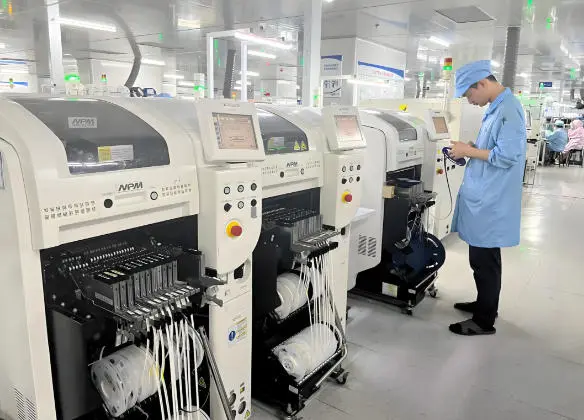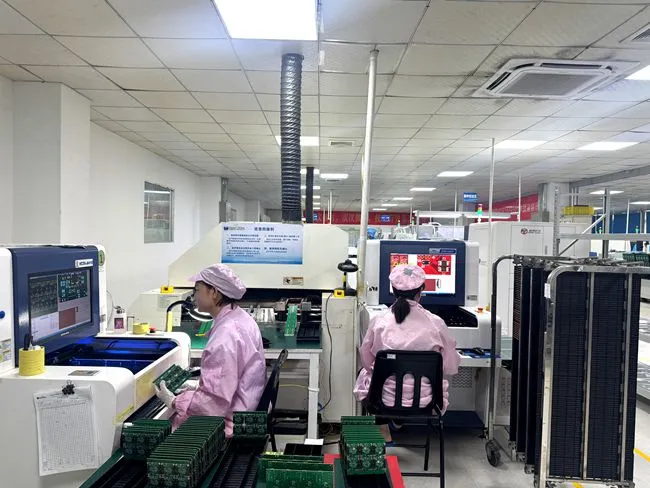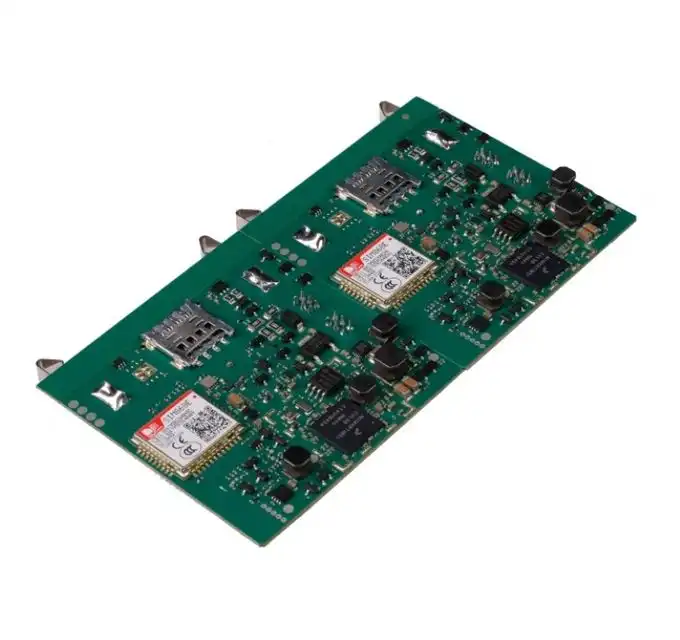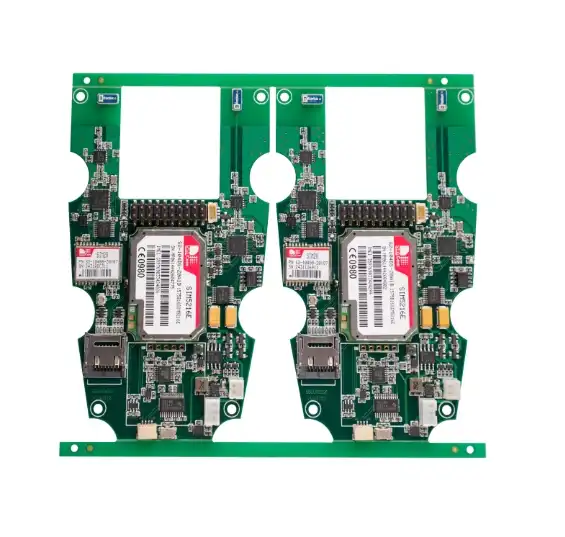Comprehending Burn-In Testing in PCBA Manufacturing
Burn-In Testing is a crucial step in the PCBA manufacturing process, designed to identify and eliminate early failures in electronic components. This rigorous testing method subjects PCBAs to extreme conditions, simulating accelerated aging and stress to uncover potential weaknesses or defects that might not be apparent under normal operating conditions.
The process typically involves exposing the assembled boards to elevated temperatures, voltages, and workloads for an extended period, often ranging from 24 to 168 hours. By doing so, manufacturers can weed out components that are likely to fail prematurely, a phenomenon known as "infant mortality" in the electronics industry.
Benefits of Burn-In Testing
Implementing Burn-In Testing in PCBA manufacturing offers several advantages:
- Enhanced Reliability: By identifying and removing weak components early in the production process, the overall reliability of the final product is significantly improved.
- Cost-Effective Quality Control: While Burn-In Testing adds to the initial manufacturing cost, it ultimately saves money by reducing field failures and warranty claims.
- Improved Customer Satisfaction: Products that have undergone Burn-In Testing are less likely to fail during use, leading to higher customer satisfaction and brand loyalty.
- Performance Verification: The testing process allows manufacturers to verify that PCBAs perform as expected under stress conditions, ensuring they meet specified performance criteria.
For high-reliability applications such as automotive electronics, medical devices, and aerospace systems, Burn-In Testing is often a mandatory requirement. It provides an extra layer of assurance that the PCBAs will function reliably in critical situations where failure is not an option.
The Role of Programming in PCBA Reliability
While Burn-In Testing focuses on identifying hardware defects, Programming plays a crucial role in ensuring the functionality and reliability of PCBAs. Programming involves configuring the software or firmware that controls the behavior of electronic components on the board.
In modern PCBAs, many components such as microcontrollers, FPGAs (Field-Programmable Gate Arrays), and memory devices require programming to function correctly. This process is typically carried out after the assembly of the board but before final testing and packaging.
Types of Programming in PCBA Manufacturing
Several types of programming are commonly used in PCBA manufacturing:
- In-Circuit Programming (ICP): This method involves programming components directly on the assembled board using dedicated programming interfaces.
- In-System Programming (ISP): Similar to ICP, but uses standard communication protocols like JTAG or SPI to program components.
- Pre-Programming: Components are programmed before being soldered onto the board, which can be useful for high-volume production.
- Bootloader Programming: A small program is loaded into the device's memory, allowing for future firmware updates without specialized equipment.
The choice of programming method depends on factors such as the type of components used, production volume, and specific requirements of the application. Proper programming ensures that each PCBA functions according to its intended design, contributing significantly to the overall reliability of the final product.
Integrating Burn-In Testing and Programming for Optimal PCBA Reliability
To achieve the highest level of reliability in PCBA manufacturing, it's essential to integrate both Burn-In Testing and Programming into a comprehensive quality assurance process. This holistic approach ensures that PCBAs are not only free from hardware defects but also correctly configured to perform their intended functions.
The Synergy Between Testing and Programming
When Burn-In Testing and Programming are effectively combined, they create a powerful synergy that enhances overall PCBA reliability:
- Comprehensive Defect Detection: Burn-In Testing can reveal hardware issues, while functional testing after programming can identify software-related problems.
- Optimized Performance: Proper programming allows for fine-tuning of component parameters, which can be verified and adjusted based on Burn-In Test results.
- Customization and Flexibility: Programming enables manufacturers to customize PCBAs for specific applications or customer requirements without changing the hardware design.
- Lifecycle Management: The combination of robust hardware (verified through Burn-In Testing) and updatable firmware (enabled by programming) extends the useful life of PCBAs.
Manufacturers implementing both processes can create a feedback loop where insights from Burn-In Testing inform programming decisions, and vice versa. This iterative approach leads to continuous improvement in PCBA reliability and performance.
Best Practices for Combining Burn-In Testing and Programming
To maximize the benefits of integrating Burn-In Testing and Programming, consider the following best practices:
- Sequence Optimization: Determine the most effective order of operations. In some cases, programming before Burn-In Testing may be preferable to ensure that components are stressed under realistic operating conditions.
- Data-Driven Decision Making: Use data collected during Burn-In Testing to inform programming choices, such as adjusting clock speeds or voltage levels for optimal performance and reliability.
- Automated Testing and Programming: Implement automated systems that can perform both Burn-In Testing and Programming, reducing human error and increasing efficiency.
- Traceability: Maintain detailed records of both testing and programming processes for each PCBA, facilitating quality control and enabling rapid troubleshooting if issues arise.
- Continuous Improvement: Regularly analyze the results of Burn-In Testing and Programming to identify trends and opportunities for enhancing PCBA reliability.
By adopting these practices, manufacturers can create a robust quality assurance process that leverages the strengths of both Burn-In Testing and Programming to produce highly reliable PCBAs.
Conclusion
In the ever-evolving landscape of electronic manufacturing, the combination of Burn-In Testing and Programming stands as a cornerstone for ensuring PCBA reliability. As a leading PCBA manufacturer and supplier, we recognize the critical importance of these processes in delivering high-quality, dependable products to our clients.
By subjecting PCBAs to rigorous Burn-In Testing, we can identify and eliminate potential hardware failures before they reach the end-user. Simultaneously, our advanced programming capabilities enable us to configure and optimize the functionality of each board, ensuring it meets the exact specifications required for its intended application.
As technology continues to advance, the integration of these two processes will become increasingly crucial. For OEMs and companies seeking a reliable PCBA manufacturer, partnering with a supplier that excels in both Burn-In Testing and Programming is essential. This comprehensive approach not only guarantees product quality but also contributes to reduced field failures, enhanced customer satisfaction, and ultimately, a stronger bottom line.
FAQ
What is the typical duration of Burn-In Testing for PCBAs?
Burn-In Testing duration can vary, but it typically ranges from 24 to 168 hours, depending on the complexity and reliability requirements of the PCBA.
Can programming be updated after a PCBA has been manufactured and tested?
Yes, many modern PCBAs are designed with the capability for firmware updates, allowing for programming changes even after manufacturing and testing.

How does Burn-In Testing affect the lifespan of a PCBA?
While Burn-In Testing subjects components to stress, it typically doesn't significantly reduce the lifespan of quality components. Instead, it helps identify and remove weak components that would likely fail early in the product's life.
Advanced PCB Manufacturing Solutions | Ring PCB
At Ring PCB, we offer cutting-edge PCB manufacturing solutions tailored to meet the most demanding industry requirements. Our advanced capabilities include producing high-density multilayer boards with up to 48 layers, featuring blind and buried vias, and ultra-fine 3/3mil trace/spacing. We excel in creating PCBs for 5G applications, industrial control systems, medical devices, and automotive electronics. Our state-of-the-art facility, equipped with LDI laser exposure and vacuum lamination technology, ensures precision and quality in every board we produce. For inquiries, contact us at [email protected].
References
1. Johnson, A. (2022). "Advances in Burn-In Testing Methodologies for Modern PCBAs." Journal of Electronic Manufacturing, 15(3), 78-92.
2. Smith, R. & Lee, K. (2021). "Integration of Programming and Reliability Testing in High-Volume PCBA Production." International Conference on Electronics Assembly, 112-125.
3. Chen, Y. (2023). "Comparative Analysis of Burn-In Testing vs. Programming in Automotive Grade PCBAs." Automotive Electronics Reliability Symposium, 45-58.
4. Williams, T. et al. (2022). "Optimizing PCBA Reliability Through Combined Burn-In and Functional Testing Strategies." IEEE Transactions on Components, Packaging and Manufacturing Technology, 12(4), 567-580.
5. Lopez, M. & Garcia, F. (2023). "Next-Generation Programming Techniques for Enhancing PCBA Functionality and Reliability." Electronics Manufacturing Technology Symposium, 89-103.






